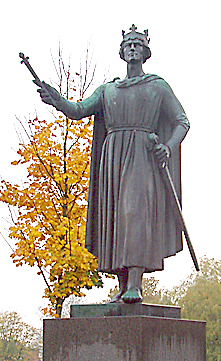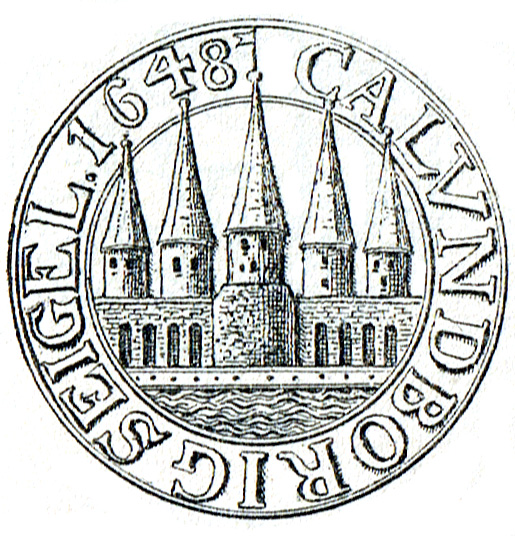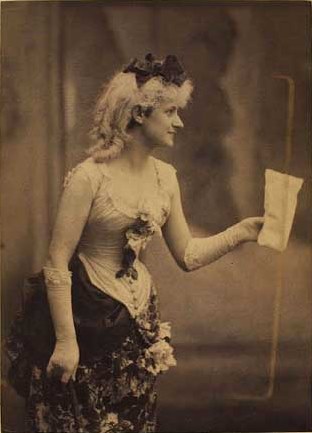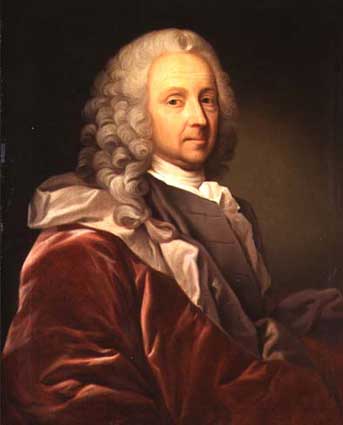|
Esbern Snare
Esbern Snare (1127–1204), also known as Esbern the Resolute, was a '' høvding'', or chieftain, royal chancellor and crusader. His family were members of the powerful Hvide clan. In 1192, during the Crusades and after the fall of Jerusalem, he led a small group of Danish soldiers to the Holy Land. Upon his return, he had the Church of Our Lady, Kalundborg built. Early life Born in 1127, Snare was the eldest son of Asser Rig (c. 1080–1151), also called Asser the rich, of the Hvide clan. Esbern's mother, Lady Inge, was the daughter of and Princess Cecilia Knutsdatter. He was the grandson of Skjalm Hvide and great-grandson of Canute IV of Denmark (c. 1042 – 10 July 1086), the first Danish king (1080–1086) to be canonized. His family lived in Fjenneslev, Zealand. His brother was Absalon (c. 1128–1201), who became a powerful warrior leader and main advisor to Danish kings, and also Bishop of Roskilde and later Archbishop of Lund. Valdemar I of Denmark was his fost ... [...More Info...] [...Related Items...] OR: [Wikipedia] [Google] [Baidu] |
Valdemar I Of Denmark
Valdemar I Knudsen (14 January 1131 – 12 May 1182), also known as Valdemar the Great (), was King of Denmark from 1154 until his death in 1182. The reign of King Valdemar I saw the rise of Denmark, which reached its medieval zenith under his son King Valdemar II. Childhood Valdemar was the son of Canute Lavard, Duke of Schleswig, the chivalrous and popular eldest son of King Eric I of Denmark. Valdemar's father was murdered by King Magnus I of Sweden days before the birth of Valdemar; his mother, Ingeborg of Kiev, daughter of Grand Prince Mstislav I of Kiev and Christina Ingesdotter of Sweden, named him after her grandfather, Grand Prince Vladimir Monomakh of Kiev. Valdemar was raised at Ringsted in the court of Danish nobleman Hvide#Family of Asser Rig, Asser Rig of Fjenneslev (–1151). Asser was a member of the Hvide noble family and had been raised together with Valdemar's father Canute Lavard. Valdemar was raised together with Asser's sons, including Absalon (–1201), w ... [...More Info...] [...Related Items...] OR: [Wikipedia] [Google] [Baidu] |
Church Militant
In some strains of Christian theology, the Christian Church may be divided into: *the Church Militant (), also called the Church Pilgrim, which consists of Christians on Earth who struggle as soldiers of Christ against sin, the devil, and "the rulers of the world of this darkness, against the spirits of wickedness in the high places"; *the Church Penitent (), also called the Church Suffering () or the Church Expectant (), which in the theology of certain churches, especially that of the Catholic Church, consists of those Christians currently in Purgatory; and *the Church Triumphant (), which consists of those who have the beatific vision and are in Heaven. Within Catholic ecclesiology these divisions are known as the "three states of the Church." The actual language used in the ''Catechism of the Catholic Church'' states that "''The three states of the Church…'' at the present time some of his disciples are pilgrims on earth. Others have died and are being purified, while ... [...More Info...] [...Related Items...] OR: [Wikipedia] [Google] [Baidu] |
Militant
The English word ''militant'' is both an adjective and a noun, and it is generally used to mean vigorously active, combative and/or aggressive, especially in support of a cause, as in "militant reformers". It comes from the 15th century Latin "''militare''" meaning "to serve as a soldier". As adjective Militant can mean "vigorously active and aggressive, especially in support of a cause" as in 'militant reformers'. The American Heritage Dictionary of the English Language, defines ''militant'' as "Having a combative character; aggressive, especially in the service of a cause". The Merriam-Webster Dictionary defines ''militant'' as "aggressively active (as in a cause)". It says that the word ''militant'' might typically be used in phrases such as 'militant conservationists' or 'a militant attitude'. An example of the adjective usages is demonstrated when ''The New York Times'' ran an article titled ''Militant Environmentalists Planning Summer Protests to Save Redwoods'' des ... [...More Info...] [...Related Items...] OR: [Wikipedia] [Google] [Baidu] |
Roger Stalley
Roger Andrew Stalley (born 12 June 1945) is a scholar and teacher in medieval architecture and sculpture. His speciality is Early Gothic and Romanesque architecture and sculpture in England and Western Europe with a particular focus on Irish architecture and art. He has published numerous papers and books including ''Cistercian Monasteries of Ireland'' in 1987, for which he was awarded the Alice Davis Hitchcock Medallion in 1988 by the Society of Architectural Historians of Great Britain, and ''Early Medieval Architecture'' in 1999 for the Oxford History of Art series. He is noted for his innovative teaching practices for example, The Medieval Architecture Online Teaching Project, and is recognised in the 2021 publication ''Mapping New Territories in Art and Architectural Histories, Essays in Honour of Roger Stalley.'' Education and career Professor Stalley spent his formative years in Coventry and Lincolnshire before graduating from the University of Oxford (Worcester College ... [...More Info...] [...Related Items...] OR: [Wikipedia] [Google] [Baidu] |
Canute VI Of Denmark
Canute VI (; c. 1163 – 12 November 1202) was King of Denmark from 1182 to 1202. Contemporary sources describe Canute as an earnest, strongly religious man. Background Canute VI was the eldest son of King Valdemar I of Denmark, Valdemar I and Sophia of Polotsk. His younger brother Valdemar II of Denmark, Valdemar was born in 1170. On 25 June 1170, at age 7, Canute was proclaimed and crowned co-king of Denmark with his father. Canute was crowned in the first coronation in Danish history by Archbishop Eskil of Lund at Ringsted. Reign Following his father's death in 1182, Canute became sole ruler and King of Denmark in 1182. at the Urnehoved Assembly (Danish: Landsting (Denmark), ''landsting'') and subsequently at the other assemblies throughout Denmark. He immediately faced a peasant uprising in Skåne. The peasants refused to pay Bishop Absalon's tithe. They met at the Skåne Assembly and chose Harald Skreng, one of Canute’s friends to represent them to the king to plead ... [...More Info...] [...Related Items...] OR: [Wikipedia] [Google] [Baidu] |
Pope Innocent III
Pope Innocent III (; born Lotario dei Conti di Segni; 22 February 1161 – 16 July 1216) was head of the Catholic Church and ruler of the Papal States from 8 January 1198 until his death on 16 July 1216. Pope Innocent was one of the most powerful and influential of the medieval popes. He exerted a wide influence over the Christian states of Europe, claiming supremacy over all of Europe's kings. He was central in supporting the Catholic Church's reforms of ecclesiastical affairs through his decretals and the Fourth Lateran Council. This resulted in a considerable refinement of Western canon law. He is furthermore notable for using interdict and other censures to compel princes to obey his decisions, although these measures were not uniformly successful. Innocent greatly extended the scope of the Crusades, directing crusades against Muslim Iberia and the Holy Land as well as the Albigensian Crusade against the Cathars in southern France. He organized the Fourth Crusade of 1202&nd ... [...More Info...] [...Related Items...] OR: [Wikipedia] [Google] [Baidu] |
Kalundborg - Vor Frue Kirke2
Kalundborg () is a Danish city with a population of 16,659 (1 January 2025),BY3: population 1. January by urban areas, area and population density The Mobile Statbank from the main town of the municipality of the same name and the site of its municipal council. It is situated on the northwestern coast of the largest Danish island, Zealand (or Sjælland in Danish), on the opposite, eastern side of which lies the capital |
Sorø Abbey
Sorø Abbey was the preeminent and wealthiest monastic house in all of Denmark during the Middle Ages. It was located in the town of Sorø in central Zealand. After Denmark became Lutheran in 1536, the abbey was confiscated by the Crown. The abbey was turned into the Sorø Academy in 1623, an educational institution that has served as a knight academy, a venue for higher learning during the Danish Golden Age. It survives to date as a boarding school. History The Sorø Abbey was founded by the brothers '' Ebbe Skjalmsen Hvide'' and '' Asser Rig (Hvide)'', who were sons of Skjalm Hvide. They were Zealand's most powerful nobles when in 1140 they founded and in 1142 consecrated the abbey. Dansk Biografiske Lexicon. Near Sorø, Ebbe also erected the Bjernede Church, and Asser established a Benedictine House, just a few years prior to his death in 1151. Asser then lived as a monk for the last years of his life. It was common practice for wealthy and powerful individua ... [...More Info...] [...Related Items...] OR: [Wikipedia] [Google] [Baidu] |
Hvidovre
Hvidovre is the main town in Hvidovre Municipality, Denmark. The town, a suburb of Copenhagen, is about 10 km southwest of the capital's center. It is the 2nd biggest suburb of Copenhagen, only beaten by Frederiksberg. History Hvidovre has been inhabited since prehistoric times. In 1929, a 3,500-year-old sword from the Bronze Age was excavated in Hvidovre. A farm, Ovre (Aworthe), was located in the area in about 1170 when Esbern Snare gave it to Sorø Abbey that later passed it on to Absalon, Bishop Absalon. A church was built during the Romanesque period. The name Hvidovre, meaning White Ovre, refers to the colour of the church, which was built in white chalk, as opposed to the one in Rødovre, Red Ovre, which was built in red brick. Hvidovre did not become a real village until the mid 1600s. In 1682 Hvidovre consisted of 18 farms and 14 houses without any agricultural land. Back then only a few crops were grown in the area. In 1635 it consisted of the following: 12% rye, ... [...More Info...] [...Related Items...] OR: [Wikipedia] [Google] [Baidu] |
Sorø Municipality
Sorø () is a town in Sorø municipality on the island of Zealand in east Denmark with a population of 8,433 (2025).BY3: Population 1. January by rural and urban areas, area and population density The Mobile Statbank from It lies on the northeastern shore of Sorø Lake. The municipal council and the regional council are located in Sorø. The town was founded in the 12th century by [...More Info...] [...Related Items...] OR: [Wikipedia] [Google] [Baidu] |
Tersløsegaard
Tersløsegaard is a manor house located close to Dianalund, Sorø Municipality some 60 kilometres southwest of Copenhagen, Denmark. It was owned by Ludvig Holberg from 1745 to 1756. He left it to Sorø Academy and it has now been converted into a self-owning foundation and contains a Holberg exhibition. The main building was listed on the Danish registry of protected buildings and places by the Danish Heritage Agency on in 1918. History Early history Tersløsegaard traces its history back to the 13th century. The first known owner was Anders Knudsen Grosøn. He was married to Esbern Snare's daughter. It was acquired by Jens Grubbe in 1305 and was then owned by his descendants for more than a hundred years. The last member of the Grubbe family to own Tersløsegaard was Niels Grubbe. He had no sons and the estate was therefore passed on to his son-in-law Anders Jensen Passow. Members of the Passow family owned Tersløsegaard with few interruptions until the beginning of the 16th cen ... [...More Info...] [...Related Items...] OR: [Wikipedia] [Google] [Baidu] |






